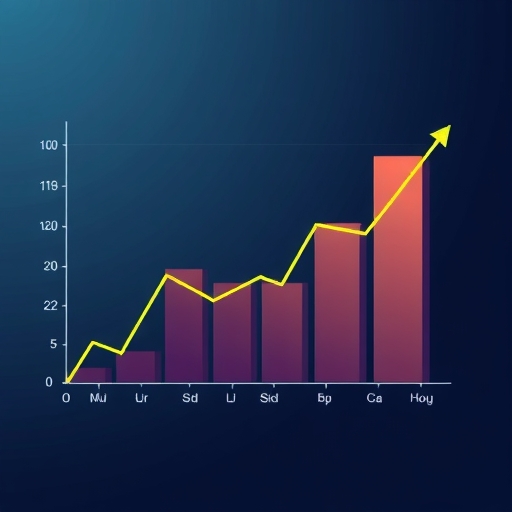Navigating the S&P 500: A European Investor’s Comprehensive Guide to ETFs
Are you a European investor looking to tap into the unparalleled growth potential of the U.S. stock market? The S&P 500 index, representing 500 of America’s largest and most influential companies, has long been a beacon for investors worldwide. However, for those of us in Europe, investing in this iconic index isn’t as simple as picking up a U.S.-listed Exchange-Traded Fund (ETF) like SPY or VOO. We face unique regulatory hurdles and tax considerations that demand a tailored approach. In this guide, we’ll demystify how European investors can effectively invest in the S&P 500, focusing on the critical factors for selecting the right ETF, understanding tax implications, and ensuring your portfolio is well-diversified.
The S&P 500 offers a compelling proposition: broad diversification across major U.S. sectors, exposure to leading global innovators in technology and other high-growth areas, and a historical track record of robust returns. Over the past 50 years, the index has delivered average annual returns exceeding 10%, consistently outperforming many European indices. This makes it an attractive core holding for many long-term portfolios. But how do we, as European investors, gain access to this performance efficiently and compliantly?

The Allure and Accessibility of the S&P 500 for European Investors
The S&P 500 index is a powerhouse, tracking 500 of the largest publicly traded companies in the United States. When you invest in an S&P 500 ETF, you’re essentially buying a tiny piece of all these companies, from tech giants like Apple and Microsoft to consumer staples and healthcare leaders. This inherent diversification significantly reduces the risk associated with investing in individual stocks, as a downturn in one company or sector is cushioned by the performance of others. For us, the appeal lies not just in its historical performance, but also in its exposure to companies at the forefront of global innovation, including those deeply involved in artificial intelligence and other transformative technologies.
Historically, the S&P 500 has proven its mettle, offering an average annual return of 11.3% over five decades. This long-term growth potential, even after accounting for inflation, makes it a cornerstone of many investment strategies. Furthermore, ETFs tracking this index typically boast significantly lower expense ratios compared to actively managed funds. This cost efficiency is crucial, as even small differences in fees can compound over decades, making a substantial impact on your total returns. So, how can we leverage these benefits while navigating the European investment landscape?

Navigating European Regulations and Maximizing Tax Efficiency
For European retail investors, the direct purchase of many popular U.S.-domiciled S&P 500 ETFs like VOO or SPY is largely blocked. Why? The culprit is a combination of two key European regulations: UCITS (Undertakings for Collective Investment in Transferable Securities) and PRIIPs (Packaged Retail and Insurance-based Investment Products). UCITS is a regulatory framework designed to ensure investor protection and transparency for investment funds within the EU, while PRIIPs mandates standardized key information documents (KIDs) for complex investment products. Most U.S.-listed ETFs do not comply with these stringent EU requirements, making them inaccessible to us.
Understanding the core regulatory hurdles is essential for European investors. These frameworks ensure investor protection but also dictate which products are accessible.
| Regulation | Purpose | Impact on US ETFs |
|---|---|---|
| UCITS | Ensures investor protection, transparency, and liquidity standards for EU investment funds. | Many US ETFs do not meet these stringent operational and disclosure requirements. |
| PRIIPs | Mandates Key Information Documents (KIDs) for packaged retail and insurance-based investment products. | Most US ETFs do not provide the legally required KIDs for European retail investors. |
These regulations are designed to protect retail investors by ensuring products are transparent and understandable, but they effectively restrict direct access to many U.S.-listed funds.
This regulatory landscape leads us to a popular and more tax-efficient alternative: Irish-domiciled S&P 500 ETFs. Ireland has a favorable tax treaty with the U.S., which significantly reduces the dividend withholding tax on U.S. stocks from 30% to 15% for Irish-domiciled funds. This tax saving is then passed on to European investors, making these ETFs more attractive than those domiciled in other EU countries without such a favorable treaty. For example, if you invest in an S&P 500 ETF domiciled in Ireland, the fund itself only pays 15% U.S. withholding tax on dividends before they reach you, whereas an ETF domiciled in a country without this treaty might see a higher percentage withheld.

Beyond domicile, the choice between accumulating ETFs and distributing ETFs is another crucial tax consideration. Accumulating ETFs automatically reinvest any dividends back into the fund, meaning you don’t receive direct payouts. Distributing ETFs, on the other hand, pay out dividends to investors. While accumulating ETFs are often favored for their compounding effect and simplicity, specific local tax rules, such as Germany’s “Sparerfreibetrag” (a tax-free allowance for investment income), might make distributing ETFs more appealing up to a certain threshold. It’s vital to understand your country’s specific tax laws to make the most advantageous choice for your portfolio.
The choice between accumulating and distributing ETFs has significant implications for your investment strategy and tax situation.
| Feature | Accumulating ETFs | Distributing ETFs |
|---|---|---|
| Dividend Handling | Automatically reinvests dividends within the fund. | Pays out dividends directly to the investor. |
| Compounding Effect | Benefits from automatic compounding over time. | Requires manual reinvestment to achieve compounding. |
| Tax Treatment | Taxed when units are sold (capital gains) in some countries, or annually on deemed income. | Dividends are taxed as income when received; capital gains taxed upon sale. |
| Income Potential | No direct income stream. | Provides a regular income stream. |
Your personal financial goals and local tax regulations should guide your decision on which distribution policy is best for you.
A less common, but also tax-efficient, option involves synthetic replication ETFs. These ETFs use swap agreements with a counterparty (typically a bank) to replicate the index’s performance without directly holding the underlying stocks. This method can sometimes entirely bypass the U.S. dividend withholding tax, potentially offering even greater tax efficiency. However, it introduces counterparty risk – the risk that the swap provider might default. While this risk is typically mitigated by collateral, it’s an important factor to consider when evaluating your investment options.
Key Selection Criteria for Your S&P 500 ETF
With the regulatory and tax landscape understood, how do you choose the best S&P 500 ETF for your portfolio? Several factors come into play, each impacting your long-term returns and overall investment experience. We want to find an ETF that aligns with our goals while minimizing costs and risks.

- Cost (Expense Ratio): This is arguably the most critical factor. The expense ratio (TER – Total Expense Ratio) is an annual fee charged by the fund provider, expressed as a percentage of your investment. Lower fees directly translate to higher net returns over time. We should always aim for the lowest possible TER. The provided data highlights some of the cheapest S&P 500 ETF options for European investors, with TERs as low as 0.03%.
- Size (Assets Under Management – AUM): Generally, larger ETFs (those with higher AUM) tend to be more stable and liquid. They benefit from economies of scale, often leading to lower expense ratios, and are less likely to be closed down. Large funds also typically have tighter bid-ask spreads, making them cheaper to trade.
- Liquidity: A highly liquid ETF can be bought and sold easily without significantly impacting its price. We look for ETFs with high trading volumes and narrow bid-ask spreads to ensure efficient entry and exit points for our investments.
- Currency Exposure: Most S&P 500 ETFs are denominated in USD, reflecting the underlying assets. For EUR-based investors, this means your investment is exposed to the EUR/USD exchange rate fluctuations. If the USD weakens against the EUR, your returns in EUR terms will be lower, even if the S&P 500 performs well. You have two main choices:
- USD-denominated ETFs: You take on currency risk, but these typically have lower expense ratios.
- Currency-hedged ETFs: These funds use financial instruments to mitigate exchange rate volatility, providing returns that more closely match the S&P 500 in your local currency (EUR). However, they usually come with higher expense ratios, and the hedging isn’t always perfect. Do you prefer to eliminate currency risk at a slightly higher cost, or are you comfortable with it for potentially lower fees?
- Distribution Policy (Accumulating vs. Distributing): As discussed, accumulating ETFs reinvest dividends, while distributing ETFs pay them out. Consider your personal tax situation and whether you prefer immediate income or long-term compounding.
- Replication Method:
- Physical Replication: The ETF directly buys the stocks in the S&P 500 index. This is generally preferred for its transparency and simplicity.
- Synthetic Replication: Uses swaps to achieve index performance. Can offer tax advantages (bypassing withholding tax) but introduces counterparty risk.
- Tracking Accuracy: A good ETF should closely mirror the performance of its underlying index. We should look for a low tracking error, which indicates how closely the ETF’s returns match the index’s returns.
To summarize, here are the crucial factors to weigh when selecting your S&P 500 ETF, ensuring it aligns with your investment strategy and minimizes costs.
| Criterion | Importance | Key Consideration |
|---|---|---|
| Expense Ratio (TER) | Highest | Aim for the lowest possible, as fees compound over time. |
| Fund Size (AUM) | High | Larger funds often mean better liquidity and stability. |
| Liquidity | High | Look for high trading volumes and narrow bid-ask spreads. |
| Distribution Policy | High | Accumulating (reinvests) vs. Distributing (pays out) – consider tax and income needs. |
| Replication Method | Medium | Physical (direct holdings) vs. Synthetic (swaps) – consider counterparty risk. |
| Currency Exposure | Medium | USD-denominated (currency risk) vs. Currency-hedged (higher fees). |
By carefully evaluating these aspects, you can confidently choose an S&P 500 ETF that best suits your long-term investment objectives.
Top S&P 500 ETF Choices for European Investors
Given the criteria above, several Irish-domiciled S&P 500 ETFs stand out as excellent choices for European investors. These funds offer UCITS compliance, favorable tax treatment, and competitive expense ratios. Let’s compare some of the most popular and highly-rated options:
When considering the cheapest S&P 500 ETF options, SPY5 and SPYL from Invesco are notable with a TER of just 0.03%. However, availability and fund size also play a role in liquidity and stability. The iShares Core S&P 500 UCITS ETF, particularly CSPX (accumulating) or VUSA (distributing), and Vanguard’s VUAA (accumulating) or VUSD (distributing) are incredibly popular due to their massive Assets Under Management (AUM) and respectable low expense ratios of 0.07%.
| ETF Ticker | Fund Provider | Domicile | Distribution Policy | Replication | Expense Ratio (TER) | AUM (approx.) |
|---|---|---|---|---|---|---|
| SPY5 | Invesco | Ireland | Accumulating | Physical | 0.03% | ~€10B |
| SPYL | Invesco | Ireland | Accumulating | Physical | 0.03% | ~€10B |
| SPXS | Xtrackers | Ireland | Accumulating | Synthetic | 0.05% | ~€3B |
| CSPX (SXR8) | iShares (BlackRock) | Ireland | Accumulating | Physical | 0.07% | ~$82B |
| VUSA (VUSD) | Vanguard | Ireland | Distributing | Physical | 0.07% | ~$39B |
| VUAA | Vanguard | Ireland | Accumulating | Physical | 0.07% | ~$39B |
| IUSE | iShares (BlackRock) | Ireland | Distributing | Physical | 0.07% | ~$82B |
These ETFs are widely available on popular brokerage platforms for European investors, such as Freedom24, Interactive Brokers, Degiro, and Scalable Capital. When making your choice, consider your investment horizon, tax situation, and whether you prefer an accumulating or distributing dividend policy. For many, the large, physically replicated, and low-cost accumulating funds like CSPX or VUAA are excellent default choices due to their simplicity and tax efficiency.
When finalizing your S&P 500 ETF selection, consider these practical steps:
- Verify the ETF’s UCITS compliance on your brokerage platform to ensure it is available for European retail investors.
- Compare the tracking error and bid-ask spread across your shortlisted ETFs to gauge their efficiency.
- Consult your local tax authority or a tax advisor regarding the specific implications of accumulating vs. distributing ETFs in your country.
- Start with a small investment to understand the trading process and observe the ETF’s behavior before committing a larger sum.
Beyond the S&P 500: Risks and Broader Diversification Strategies
While the S&P 500 is a fantastic investment, relying solely on it for your entire portfolio comes with certain risks that we, as informed investors, must acknowledge. Passive investing in the S&P 500 means you track the market, for better or worse, without the flexibility to react defensively during downturns. So, what are these risks, and how can we mitigate them?
One significant concern is overconcentration risk. The S&P 500 is a market-capitalization-weighted index, meaning companies with larger market values have a greater influence on the index’s performance. This often leads to a heavy weighting in a few dominant large-cap technology companies. While these companies have driven impressive growth, a downturn in this specific sector could disproportionately impact your portfolio. Furthermore, the S&P 500 is entirely U.S.-focused, meaning it lacks geographic diversification. It misses out on potential growth opportunities in other developed markets (like Europe or Asia) and emerging markets, and it doesn’t offer a hedge against a prolonged downturn in the U.S. economy.
Another risk is valuation risk. If you invest during periods when the market is highly valued, future returns might be lower, or you could experience losses during market corrections. While the S&P 500 has a strong long-term track record, past performance is not indicative of future results, and market cycles are a reality.
To address these limitations, we often advocate for a more globally diversified approach. Instead of, or in addition to, a pure S&P 500 ETF, consider:
- Diversified World ETFs: Funds like the Vanguard FTSE All-World UCITS ETF (VWCE) or iShares Core MSCI World UCITS ETF (IWDA) offer exposure to thousands of companies across developed and, in some cases, emerging markets. This provides a much broader geographic and sectoral spread, reducing the overconcentration risk of a single-country index.
- Sector-Specific ETFs: If you have a strong conviction about a particular industry, such as NASDAQ ETFs for technology or Cloud Computing ETFs (e.g., WCLD) for targeted growth, these can complement your core holdings. However, they naturally increase concentration risk.
- Other Asset Classes: For true diversification and risk management, especially in volatile economic climates, consider adding other asset classes to your portfolio. This could include bonds (e.g., Euro Government Bond ETFs, USD Treasury Bond ETFs), commodities, or even gold. Some experienced investors also consider alternative assets like Bitcoin as a hedge against currency volatility, though this comes with significantly higher risk.
Building a resilient portfolio involves more than just picking a good S&P 500 ETF. It’s about understanding your personal investment goals, risk tolerance, and regularly reviewing your overall asset allocation. A balanced portfolio, combining the growth potential of the S&P 500 with broader global diversification and other asset classes, can help you navigate various market conditions and work towards your long-term financial objectives.
Conclusion: Empowering Your European S&P 500 Investment Journey
Investing in the S&P 500 offers European investors a powerful avenue to participate in the growth of the world’s leading economy. However, success hinges on understanding the unique regulatory framework (UCITS, PRIIPs), optimizing for tax efficiency (Irish-domiciled ETFs, accumulating vs. distributing), and meticulously selecting an ETF based on crucial factors like expense ratio, fund size, and liquidity. The cheapest S&P 500 ETF options, such as Invesco’s SPY5 or SPYL, provide excellent cost efficiency, while larger funds like iShares’ CSPX or Vanguard’s VUAA offer robust liquidity and stability at competitive rates.
Remember, while the S&P 500 is a strong performer, a truly resilient portfolio often benefits from broader diversification beyond a single index or country. Consider complementing your S&P 500 exposure with global “All-World” ETFs, other asset classes, or even exploring sector-specific opportunities to manage risks effectively. By taking a thoughtful, informed approach, you can harness the power of the S&P 500 to build a robust investment strategy tailored to your European context.
Disclaimer: This article is for informational and educational purposes only and does not constitute financial advice. Investing in financial markets carries inherent risks, and past performance is not indicative of future results. Always consult with a qualified financial advisor to discuss your individual investment goals, risk tolerance, and tax situation before making any investment decisions.
Frequently Asked Questions (FAQ)
Q: Why can’t European investors directly buy popular U.S.-listed S&P 500 ETFs like SPY or VOO?
A: European retail investors are generally blocked from buying U.S.-listed ETFs due to EU regulations like UCITS and PRIIPs. These regulations require investment products to meet specific investor protection and transparency standards, including providing Key Information Documents (KIDs), which most U.S. ETFs do not supply.
Q: What are the main benefits of choosing an Irish-domiciled S&P 500 ETF?
A: Irish-domiciled S&P 500 ETFs offer significant advantages for European investors, primarily due to Ireland’s favorable tax treaty with the U.S. This treaty reduces the U.S. dividend withholding tax from 30% to 15% for these funds, leading to greater tax efficiency that is passed on to investors. They are also UCITS-compliant, making them accessible to European retail investors.
Q: Should I choose an accumulating or distributing S&P 500 ETF?
A: The choice between accumulating and distributing ETFs depends on your personal investment goals and local tax situation. Accumulating ETFs automatically reinvest dividends, fostering compound growth and often simplifying tax reporting in some jurisdictions. Distributing ETFs pay out dividends, providing a regular income stream. It’s crucial to understand your country’s specific tax rules, as these can significantly impact which option is more advantageous for you.



No responses yet